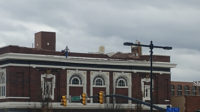Rebuilding after the February 2011 magnitude-6.3 earthquake in Christchurch, a city of 382,000 people, offers a cautionary tale for future disaster recovery. One aspect that has gone mostly unnoticed outside New Zealand is the problem created by the large number of insured properties and the government’s role as an insurer.
According to David Farrar, a former deputy regional chairman of the National Party and a former media adviser to the state government and prime minister, Christchurch had, at 75%, far more insured properties than other earthquake-stricken cities. Insurance covered only 19% of the property losses in the 1996 Kobe earthquake in Japan and only 35% of the losses in the 1994 Northridge earthquake, says Farrar.
Delays in claims settlements, which of course prolong suffering and anxiety, sprang from the blurred line between the coverage provide by the New Zealand government via the Earthquake Commission, for the first $100,000 of property damage, and the remaining coverage provided by private insurers.
Unfortunately, because the government’s Earthquake Commission had the insurance coverage on so many properties, the commission’s responsibility and the private insurers’ responsibility became muddled. Of all the post-quake problems, “this one has had the most severe and debilitating impact,” wrote Farrar. The Earthquake Commission and private insurers couldn’t immediately sort out their differing procedures as well as the wording and interpretation of the differing policies. Private insurers didn’t want to touch any claim below $100,000, but views of repair costs and scope differed.
To those in New York City who remember how insurance-policy interpretation delayed the rebuilding of the World Trade Center towers, the issue of policy language and legal terms is familiar. Every major municipality exposed to natural disasters should examine how claims would be paid so that legal entanglements don’t significantly delay rebuilding and recovery.
The worst appears to be over in New Zealand. According to the Insurance Council of New Zealand, in 2015, the pace of settlements improved in claims for residential and commercial property damage. So far, the total is $15 billion, the council reported last year. Homeowners had to decide whether to take cash settlements and move or funds to repair and rebuild. According to the Canterbury Earthquake Recovery Authority, 75% of all over-cap residential claims are resolved or have been fully settled.
Private insurers have settled 66%, or more than 16,000, over-cap residential Canterbury earthquake claims, including more than 1,500 in the quarter to June 30, 2015—the equivalent of nearly 17 properties a day.
Despite all the considerable difficulties, inequities and suffering that New Zealand and Christchurch have endured, the engineering community should be impressed with what has been accomplished.




